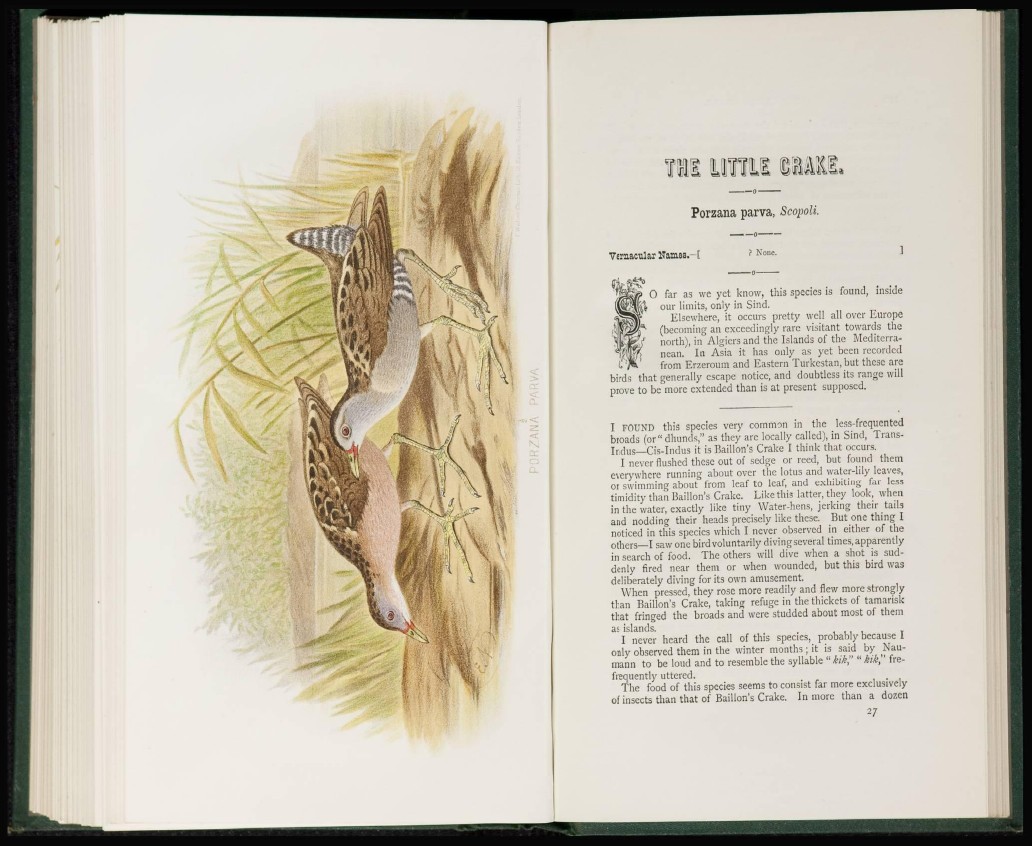
Porzana parva, Scopoli.
Vernacular Namss.-F.
O far as we yet know, this species is found, inside
our limits, only in Sind.
Elsewhere, it occurs pretty well all over Europe
(becoming an exceedingly rare visitant towards the
north), in Algiers and the Islands of the Mediterranean.
In Asia it has only as yet been recorded
from Erzeroum and Eastern Turkestan, but these are
that generally escape notice, and doubtless its range will
prove to be more extended than is at present supposed.
I FOUND this species very common in the less-frequented
broads (or" dhunds," as they are locally called), in Sind, Trans-
Indus—Cis-Indus it is Baillon's Crake I think that occurs.
I never flushed these out of sedge or reed, but found them
everywhere running about over the lotus and water-lily leaves,
or swimming about from leaf to leaf, and exhibiting far less
timidity than Baillon's Crake. Like this latter, they look, when
in the water, exactly like tiny Water-hens, jerking their tails
and nodding their heads precisely like these. But one thing I
noticed in this species which I never observed in either of the
others—I saw one bird voluntarily diving several times, apparently
in search of food. The others will dive when a shot is suddenly
fired near them or when wounded, but this bird was
deliberately diving for its own amusement.
When pressed, they rose more readily and flew more strongly
than Baillon's Crake, taking refuge in the thickets of tamarisk
that fringed the broads and were studded about most of them
as islands.
I never heard the call of this species, probably because I
only observed them in the winter months ; it is said by Naumann
to be loud and to resemble the syllable " kite" " kik" frefrequently
uttered.
The food of this species seems to consist far more exclusively
of insects than that of Baillon's Crake. In more than a dozen